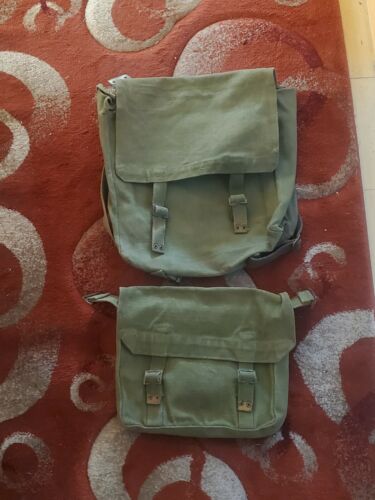-40%
WWI British Expeditionary Force B.E.F. Yorkshire Regiment Trench Art Match Safe
$ 71.28
- Description
- Size Guide
Description
Comes with C.O.A.This original World War I match safe trench art was created by a soldier serving with the British Expeditionary Forces during World War 1. This match case is created out of a hard steel and aluminum body with the crest of the Princess of Wale’s Own Yorkshire Regiment adorned on the front. The gold badge of the Yorkshire regiment is off of a cap and was worn originally as a cap badge. On the back of this matchbox is embossed “France 1915” with what appears to be a discarded fired 'relic' melted into the back of the case itself. This soldier also did some ornate curl line designs to fill up the space on the back of the matchbox.
The regiment is perhaps better known as the “Green Howards”. This title dates back to the wars of Austrian Succession in the mid 1700s. The Colonel at the time was named Howard. At this time, regiments were often referred to by the name of their Colonel. As the regiment was brigaded with another whose name was also Howard, there was duplication. So this regiment, which wore green facings to its uniform, became the “Green” Howards and the other regiment the “Buff” Howards. The “Green Howards” and the “Buffs” were names still in use in 1914-1918.
The 1st Battalion remained in India as part of the 2nd (Sialkot) Cavalry Brigade in the 2nd (Rawalpindi) Division throughout the war and then took part in the Third Anglo-Afghan War in 1919.
The 2nd Battalion landed at Zeebrugge as part of the 21st Brigade in the 7th Division in October 1914 for service on the Western Front. The 2nd Battalion held the Menin crossroads for 16 days during the First Battle of Ypres in October 1914 sustaining heavy casualties.
The 1/4th and 1/5th Battalions landed at Boulogne-sur-Mer as part of the York and Durham Brigade in the Northumbrian Division in April 1915 for service on the Western Front. Both battalions saw action at the Second Battle of Ypres in April 1915.
The 6th (Service) Battalion landed at Suvla Bay in Gallipoli as part of the 32nd Brigade in the 11th (Northern) Division in August 1915; the battalion was evacuated to Egypt in January 1916 and then moved to France in July 1916 for service on the Western Front.
The 7th (Service) Battalion landed at Boulogne-sur-Mer as part of the 50th Brigade in the 17th (Northern) Division in July 1915 for service on the Western Front. The 8th (Service) Battalion landed at Boulogne-sur-Mer as part of the 69th Brigade in the 23rd Division in August 1915 also for service on the Western Front. The 9th (Service) Battalion landed at Boulogne-sur-Mer as part of the 69th Brigade in the 23rd Division in August 1915 also for service on the Western Front but moved to Italy in November 1917 and then returned to France in September 1918. The 10th (Service) Battalion landed at Boulogne-sur-Mer as part of the 62nd Brigade in the 21st Division in September 1915 also for service on the Western Front. The 12th (Service) Battalion, formed as the "Middlesbrough Pals" by the Mayor and Town of Middlesbrough, landed at Le Havre as pioneer battalion to the 40th Division in June 1916 also for service on the Western Front. The 13th (Service) Battalion landed at Le Havre as part of the 121st Brigade in the 40th Division in June 1916 also for service on the Western Front but, after returning to the United Kingdom in June 1918, moved to Murmansk in November 1918.

















